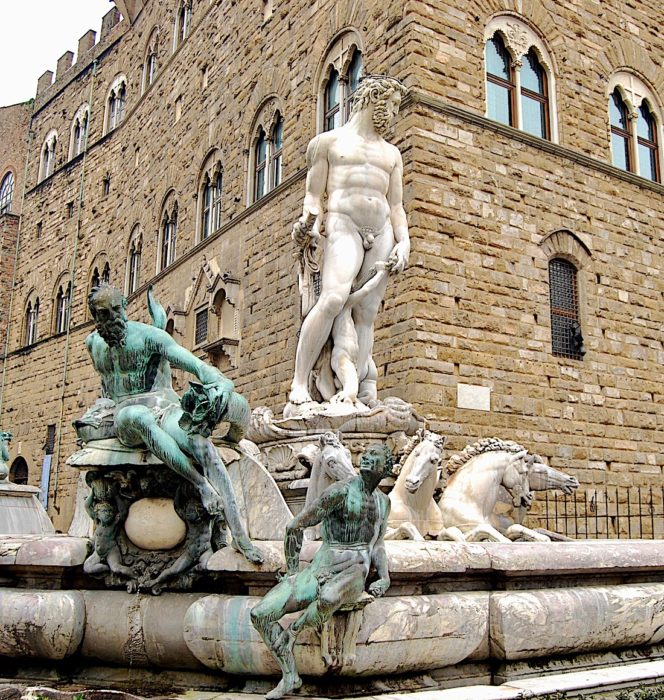
Age
1549-1575
Designers
Baccio Bandinelli, Bartolomeo Ammannati
The Fontana del Nettuno, also locally called “il Biancone”, is located in Piazza della Signoria and represents the monument celebrating the power of Cosimo I de’ Medici as well as the maritime domain of Firenze. The first project of the fountain was due to Baccio Bandinelli in 1549. At the death of Bandinelli, in 1560, Bartolomeo Ammannati took over the works. The location of the fountain was the left corner of the Palazzo della Signoria, the focal point of the two sides of Piazza della Signoria. The realization of the work was in conjunction with the reconstruction of the city’s water infrastructure: to get the water to flow, an aqueduct was built from Oltrarno to go down to the Piazza della Signoria. The works continued until 1565 and in the same year the fountain was inaugurated on the occasion of the marriage between Francesco I de ‘Medici and the Grand Duchess Giovanna of Austria. In 1575 the bronze sculptures (attributed to Giambologna but according to other sources realized by Ammannati and his assistants) of marine divinities (Doride, Teti, Oceano and Nereo), all flanked by pairs of satyrs and nymphs and the marble parts of the tub were completed. The fountain is characterized by a large octagonal tub with bronze sculptures and many decorative elements along the edges. At the center of the tub there is a chariot pulled by four horses, emerging in part from the water, above which rises the figure of Neptune (the face is said to resemble that of Cosimo I de’ Medici) which has three tritons between his legs. The fountain has undergone several restoration works since the XVIII century until present (in the period 2016-2019).

